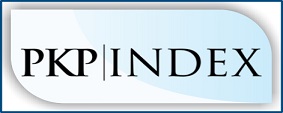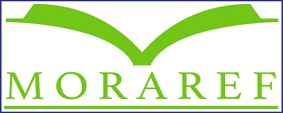GAMBARAN SAFETY CLIMATE DAN INTERVENSI PROGRAM KESELAMATAN DI PROYEK Z PT.X
DOI:
https://doi.org/10.31004/prepotif.v5i2.2039Keywords:
iklim keselamatan, konstruksi, program iklim keselamatanAbstract
Safety Climate telah dianggap sebagai isu penting dalam industri konstruksi selama bertahun-tahun, termasuk di PT. X; salah satu perusahaan konstruksi terkemuka di Indonesia. Penelitian ini dilakukan untuk mendeskripsikan iklim keselamatan pada Proyek Z, sebuah lokasi konstruksi milik PT. X. Penelitian ini menggunakan pendekatan kuantitatif dengan metode stratified random sampling; pertanyaan-pertanyaan tertutup yang dihasilkan ini dibagikan kepada total 80 pekerja konstruksi. Temuan menyiratkan bahwa kedelapan variabel independen yang digunakan dalam makalah ini sangat terkait dengan iklim keselamatan secara keseluruhan. Selanjutnya, penelitian ini dapat digunakan sebagai bahan pengembangan program keselamatan di Proyek Z.References
Soemardi, B.W., Fajri, A., and Wulan, S. (2009). Study on the Effectiveness of Construction Safety Regulation in Indonesia. In First Asean Civil Engineering Conference, Pattaya, Thailand, 12-13 March.
Cigularov, K. P., Chen, P. Y., & Rosecrance, J. (2010). The effects of error management climate and safety communication on safety: a multi-level study. Accident; analysis and prevention, 42(5), 1498–1506. https://doi.org/10.1016/j.aap.2010.01.003
Zohar, D. (1980). Safety climate in industrial organizations: Theoretical and applied implications. Journal of Applied Psychology, 65(1), 96–102. https://doi.org/10.1037/0021-9010.65.1.96
Probst, T., Goldenhar, L., Byrd, J., Betit, E. (2019). The Safety Climate Assessment Tool (S-CAT): A rubric-based approach to measuring construction Safety climate. Journal of Safety Research. 69. 10.1016/j.jsr.2019.02.004.
Zohar, D., & Polachek, T. (2014). Discourse-based intervention for modifying supervisory communication as leverage for safety climate and performance improvement: A randomized field study. Journal of Applied Psychology, 99(1), 113–124. https://doi.org/10.1037/a0034096
Neal, A., & Griffin, M. A. (2004). Safety climate and safety at work. In J. Barling & M. R. Frone (Eds.), The psychology of workplace safety (pp. 15–34). American Psychological Association. https://doi.org/10.1037/10662-002
Schwatka, N. V., & Rosecrance, J. C. (2016). Safety climate and safety behaviors in the construction industry: The importance of co-workers commitment to safety. Work (Reading, Mass.), 54(2), 401–413. https://doi.org/10.3233/WOR-162341
Keffane, S. (2014). Communication's Role in Safety Management and Performance for the Road Safety Practices. International journal of transportation science and technology, 3, 79-94.
Vinodkumar, M. N., & Bhasi, M. (2010). Safety management practices and safety behaviour: assessing the mediating role of safety knowledge and motivation. Accident; analysis and prevention, 42(6), 2082–2093. https://doi.org/10.1016/j.aap.2010.06.021
Gillen, M., Kools, S., Sum, J., McCall, C., & Moulden, K. (2004). Construction workers' perceptions of management safety practices: a qualitative investigation. Work (Reading, Mass.), 23(3), 245–256.
Bosak, J., Coetsee, W., Cullinane. (2013). Safety climate dimensions as predictors for risk behavior. In Journal Science Direct : Accident analysis and prevention. 55C. 256-264. 10.1016/j.aap.2013.02.022.
Colley, S., Lincolne, J., & Neal, A. (2013). An examination of the relationship amongst profiles of perceived organizational values, safety climate and safety outcomes. Safety Science, 51, 69-76.
OSHAcademy. (2020). Course 116 : Introduction to Safety Accountability. Geigle Safety Group, Inc,.United States:
OSHA. (2016) Recommended Practices for Safety and Health Programs in Construction.
Cooling, R. F. (2011). The law and management of worker involvement in safety and health.: Retrieved from https://search.proquest.com/dissertations-theses/law-management-worker-involvement-safety-health/docview/1687704834/se-2?accountid=17242
Hofmann, D. A., & Morgeson, F. P. (1999). Safety-related behavior as a social exchange: The role of perceived organizational support and leader–member exchange. Journal of Applied Psychology, 84(2), 286–296. https://doi.org/10.1037/0021-9010.84.2.286
Bena, A., Berchialla, P., Coffano, M. E., Debernardi, M. L., & Icardi, L. G. (2009). Effectiveness of the training program for workers at construction sites of the high-speed railway line between Torino and Novara: impact on injury rates. American journal of industrial medicine, 52(12), 965–972. https://doi.org/10.1002/ajim.20770
CITB - Construction Industry Training Board. (2014). Skills and Training in the Construction. p.25-28.
Smith, E. M., Ford, J. K., & Kozlowski, S. W. J. (1997). Building adaptive expertise: Implications for training design strategies. In M. A. Quiñones & A. Ehrenstein (Eds.), Training for a rapidly changing workplace: Applications of psychological research (pp. 89–118). American Psychological Association. https://doi.org/10.1037/10260-004
AIHA - American Industrial Hygiene Association. (2017). How to Improve the Safety Climate on Your Construction Site. p.31-32,.
Conchie, S. M., & Burns, C. (2008). Trust and risk communication in high-risk organizations: a test of principles from social risk research. Risk analysis : an official publication of the Society for Risk Analysis, 28(1), 141–149. https://doi.org/10.1111/j.1539-6924.2008.01006.x
Downloads
Published
How to Cite
Issue
Section
License
Copyright (c) 2021 Febby Fauzia Deliani, Agra Mohamad Khaliwa, Annisa Elfariyani, Muhammad Rahmanda Lintang, Zulkifli Djunaidi

This work is licensed under a Creative Commons Attribution-ShareAlike 4.0 International License.
Authors who publish with this journal agree to the following terms:
- Authors retain copyright and grant the journal right of first publication with the work simultaneously licensed under a Creative Commons Attribution License that allows others to share the work with an acknowledgement of the work’s authorship and initial publication in this journal.
- Authors are able to enter into separate, additional contractual arrangements for the non-exclusive distribution of the journal’s published version of the work (e.g., post it to an institutional repository or publish it in a book), with an acknowledgement of its initial publication in this journal.
- Authors are permitted and encouraged to post their work online (e.g., in institutional repositories or on their website) prior to and during the submission process, as it can lead to productive exchanges, as well as earlier and greater citation of published work (See The Effect of Open Access).











